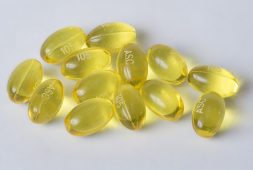Fever

A fever is often dreaded by many new parents, or parents of young children. However, as many experienced parents know, a fever is inevitable in any child’s life. Several times in a child’s lifetime, that child will experience fevers. As mentioned in the previous page, viruses and bacteria do not thrive well in hot environments. Like the heat produced by shivering chills, the body will try to eliminate pathogens by raising its core temperature, which is what a fever is.
The human body’s normal core temperature range is 93.2F (34C) to 96.8 (36C). At 99.3F (37.4C) to 102.92F (39.4C), this is considered a low fever, and is typical of viral infections. A temperature above 102.92F (39.4C) is considered a high fever, and would usually be indicators of a bacterial infection.
It is important to address a high fever as soon as possible. Too much heat from the fever can lead to organ damage and heat stroke. The objective is to lower the child’s core temperature immediately. The quickest way to lower a person’s core temperature is to wet that person with water, either by wiping the person with a wet towel, or pouring water on that person.



